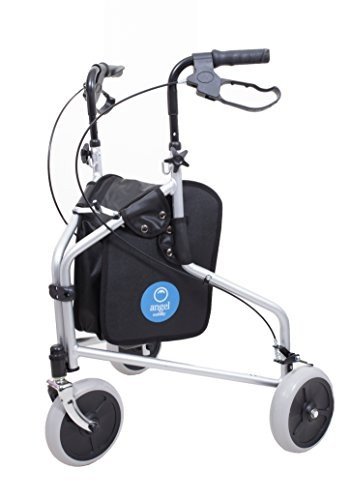A Comprehensive Guide to Buying a Mobility Scooter
Mobility scooters have actually ended up being an essential tool for many individuals seeking to boost their independence and mobility. With a large variety of designs and features offered, choosing the best mobility scooter can be daunting. This short article provides an informative guide to assist consumers browse their alternatives, evaluate their requirements, and make a notified purchase.
Understanding Mobility Scooters
Mobility scooters are electric cars developed for people who experience mobility obstacles. They are particularly advantageous for elders, those with impairments, or individuals recovering from injuries. Mobility scooters can differ extensively in terms of style, functions, and rates.
Types of Mobility Scooters
Before embarking on a purchase, it's essential to comprehend the different kinds of mobility scooters readily available:
Three-Wheel Scooters:
- Generally more maneuverable in tight areas
- Lightweight and portable
- Suitable for indoor use
Four-Wheel Scooters:
- Offer greater stability and balance
- Suitable for outdoor usage over different terrains
- Usually have a longer battery life
Foldable/Portable Scooters:
- Designed to be easily transferred and saved
- Can typically fit in the trunk of an automobile
- Perfect for those who take a trip frequently
Durable Scooters:
- Built to accommodate bigger people
- Frequently featured more robust functions for outdoor usage
- Generally equipped with bigger batteries for extended range
Factors to Consider When Buying a Mobility Scooter
1. Weight Capacity
Pick a mobility scooter that can support the user's weight. Most scooters have a weight limitation varying from 250 to 500 pounds. It is essential to make sure that the scooter can accommodate the user easily.
2. Range and Battery Life
The range is how far the mobility scooter can take a trip on a single charge. Normal varieties vary between 10 to 30 miles. Think about our homepage and choose a scooter with a suitable range.
3. Scooter Dimensions
Think about the size of the scooter, including its weight and measurements. A more compact scooter may be ideal for narrow hallways and tight spaces, while larger models use extra stability and convenience.
4. Terrain Capability
Examine where the scooter will mainly be used. If the user prepares to take a trip primarily on pavement, a lightweight design might be sufficient. Nevertheless, if the user requires to traverse gravel or uneven surface areas, think about a four-wheel scooter constructed for off-road use.
Top Features to Look For
Convenience
- Adjustable Seats: Look for scooters with cushioned and height-adjustable seats to make sure comfort throughout travel.
- Armrests: These improve safety and support while browsing.
Safety and Visibility
- Headlights and Taillights: Essential for nighttime usage.
- Turn Signals and Reflectors: Improve exposure and safety while on the roadway.
User-Friendly Controls
- Joystick or Drive Controls: These ought to be instinctive and simple to control.
- Easy-to-Read Displays: A control board that shows battery life, speed, and distance can improve the user experience.
Additional Features
- Storage Compartments: These offer included benefit for carrying individual items while on the go.
- Weather Protection: Consider models with rain covers or windscreens if used in variable climate condition.
Expense Considerations
When budgeting for a mobility scooter, rates can vary anywhere from ₤ 500 to over ₤ 5,000 depending upon the model, functions, and brand. Additional expenses might consist of:
- Extended Warranty: Protects against defects and can save money in the long run.
- Devices: Optional functions, such as updated seats, lights, or storage solutions.
| Feature | Cost Range |
|---|---|
| Fundamental Models | ₤ 500 - ₤ 1,500 |
| Mid-Range Models | ₤ 1,500 - ₤ 3,000 |
| High-End Models | ₤ 3,000 - ₤ 5,000 |
Funding Options
Numerous retailers use financing plans, and some city government initiatives might offer grants or assistance for those in need. Investigate possible financial assistance with community resources or mobility service companies.
Frequently asked questions about Buying a Mobility Scooter
What is the distinction between a mobility scooter and a wheelchair?
Mobility scooters are motorized and enable users to navigate individually, while wheelchairs might need physical help or manual operation.
How do I preserve a mobility scooter?
Routine maintenance includes inspecting battery life, cleaning up the scooter, and examining tires and brakes. Constantly describe the user manual for specific standards.
Can mobility scooters be used inside?
Yes, many designs are designed for both indoor and outside usage. Nevertheless, three-wheel scooters tend to be much better fit for indoor navigation due to their tighter turning radius.
Are mobility scooters covered by insurance?
Some insurance plans cover a part of the expenses for mobility scooters if they are deemed medically needed. Contact your provider for specific information.
How quickly can a mobility scooter go?
A lot of mobility scooters have a maximum speed varying from 4 to 8 mph. Nevertheless, the proper speed might differ depending on local regulations.
Getting a mobility scooter can considerably improve one's independence and quality of life. By comprehending the types, features, and costs related to mobility scooters, prospective buyers can make educated decisions that match their needs and preferences. Customization and extensive research are essential to guaranteeing complete satisfaction with this essential investment.

